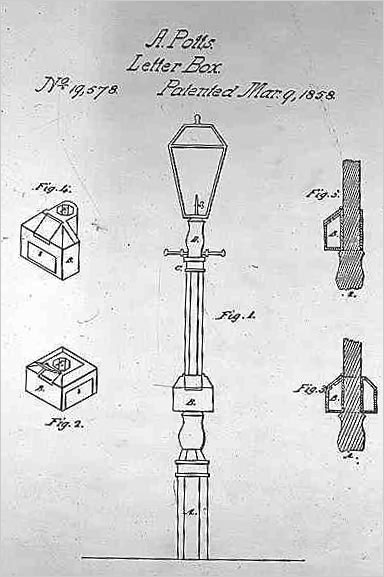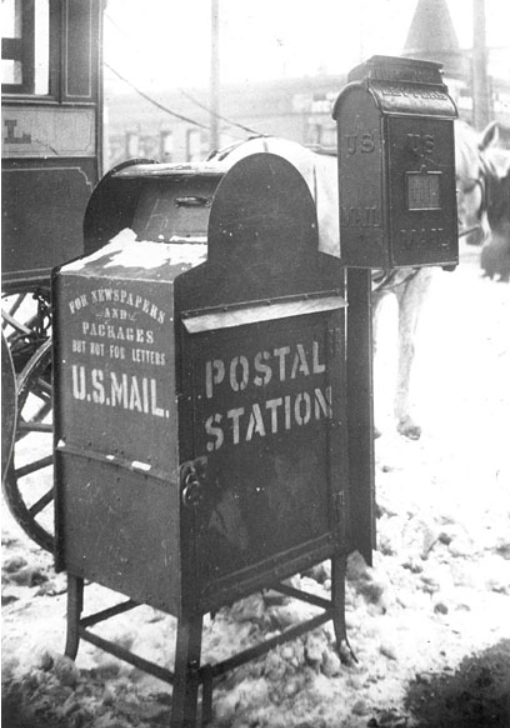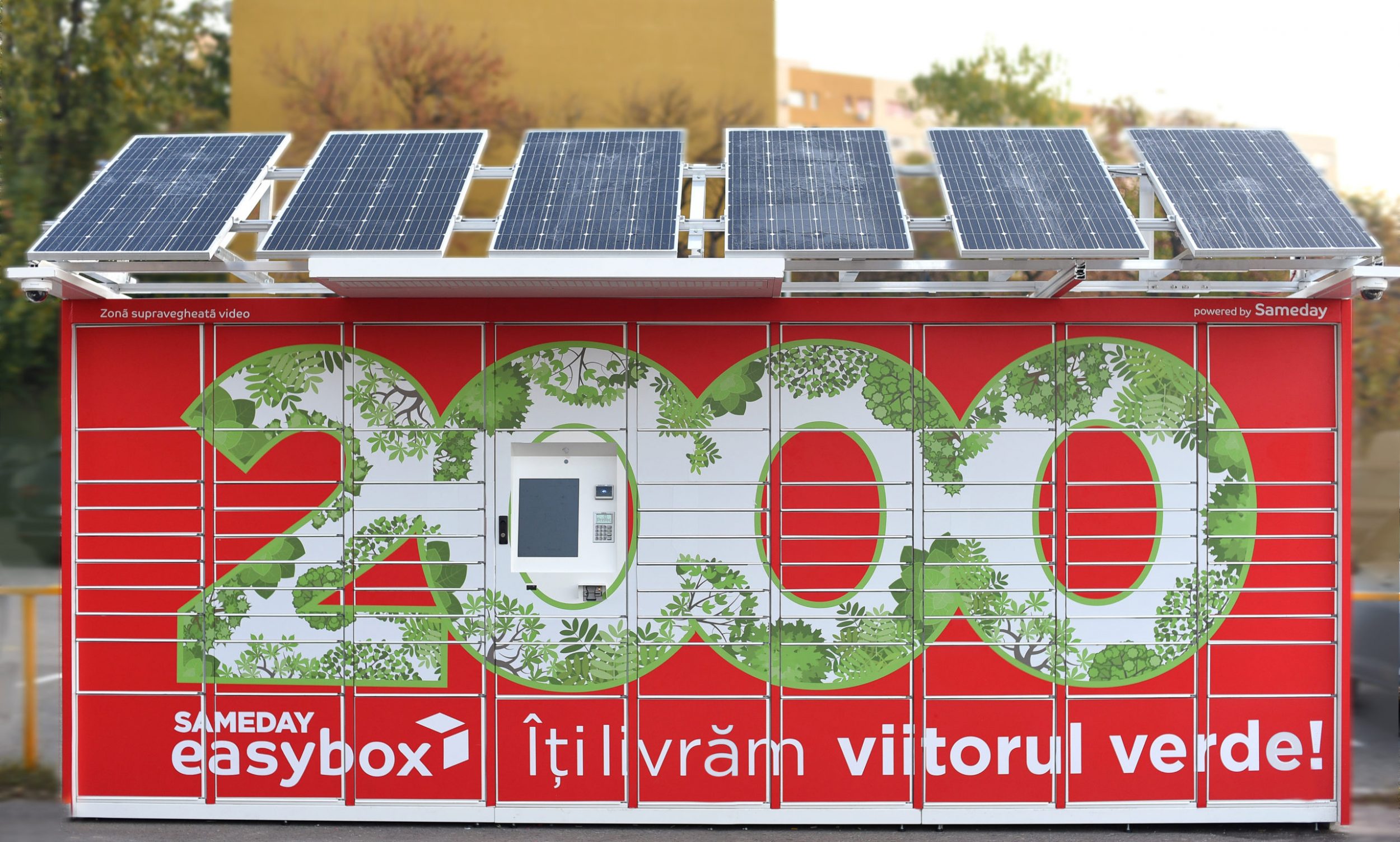01.05.2023
Revolutionizing the Delivery: Brief History of Parcel Lockers
Parcel lockers have a relatively short history compared to other forms of package delivery. However, parcel lockers are not a new invention – their history dates back over a century. In this post, we will explore the fascinating history of parcel lockers, trace their evolution from the first prototypes and mail boxes to the latest parcel locker models that we see in use today. By understanding the development of parcel lockers over time, we can gain insight into how they have become such an important part of our daily lives.
From Mailboxes to First Parcel Locker Prototypes
The history of the first mailboxes dates back to ancient times. The first known example of a mailbox was in ancient Persia, where people used small clay pots to store and transport letters. Over time, mailboxes evolved to become more sophisticated and elaborate, reflecting the importance of written communication in various cultures.
In medieval Europe, mail was primarily carried by messengers on the horse backs, and mailboxes as we know them today did not exist. However, in the 17th century, the Royal Mail in England began to establish designated letterboxes in public places where people could deposit their letters. The letterboxes were made of cast iron and secured with a lock and key.
The use of regular mailboxes became more widespread in the 19th century as postal services expanded and became more accessible for everyone. The first mailbox in the United States was installed in Boston in 1858, and it was quickly spread to other cities across the country. These early mailboxes were made of wood or metal and were usually located on street corners or outside the post offices.

Source: Smithsonian National Postal Museum
https://postalmuseum.si.edu
In the late 19th century, the US Post Office Department started installing “Package boxes” next to its letter boxes to handle packages.

Source:Smithsonian National Postal Museum
https://postalmuseum.si.edu/
As the 20th century progressed, mailboxes continued to evolve to meet the changing needs of postal services and their customers. In the 1920s, the first mailboxes with chutes for depositing mail from upper floors were introduced in large office buildings. In the 1950s and 1960s, mailboxes were designed to be more weather-resistant and were made of materials such as aluminium and stainless steel. Mailboxes became more specialized to accommodate different types of mail and packages. For example, some mailboxes had separate compartments for letters and larger parcels. Such concept lead to the invention of first parcel lockers in early 2000s.
The Rise of Parcel Lockers: How They Change the Delivery Game
The invention of parcel lockers cannot be attributed to a single individual, as their development and evolution have involved various inventors, companies, and organizations over time. Parcel locker prototypes emerged in the early 2000s, when they were introduced in countries such as Germany, Sweden, and the United States.
Then the pilot project of parcel locker system was introduced in Germany in 2001. It was the prototype of an automated locker system that provided a convenient, self-service option for parcel delivery and pickup. Such systems and their analogues spread out all over the world and gained popularity with the rise of the click and collect e-commerce model. Raise of online purchases accelerated the growth of parcel locker networks. Parcel locker systems were installed at post offices, convenience and grocery stores, shopping malls and other public places.

Today, many companies and retailers around the world use parcel lockers as a way to improve their delivery and pickup processes, reduce missed deliveries and returns, and increase customer satisfaction.
Below, we’ve listed the ways how parcel locker terminals revolutionized the delivery process and services.
- Enhanced security: Parcel lockers provide a secure way to receive packages and require a unique QR code or key to open the locker. It reduces the risk of package theft and fraud.
- 24/7 operation: Parcel lockers are available 24/7 and provide the user with a flexible and convenient way to pickup packages. Clients no longer need to stay at home and wait for the courier.
- Increased efficiency: Parcel lockers help to streamline the package delivery process, reduce the time and cost associated with traditional delivery methods. This is particularly beneficial for businesses delivering high volume of packages.
- Better tracking: Parcel lockers often support tracking technology that allows users to track their packages in a real-time. This reduces the risk of lost or misplaced packages.
- Sustainability: Parcel lockers can be an environmental friendly solution, as they can be powered with solar batteries and reduce the volume of CO2 emissions from delivery vans.

Emerging Technologies in Parcel Lockers
The use of parcel terminals is a growing trend, especially as e-commerce continues to expand. Let’s have a brief look at modern technologies implemented in parcel terminal networks.
- Access code scanning: code scanning technology is used to track packages and ensure they’re delivered to the correct locker compartment. The user can scan the QR code to access the locker and pickup the package.
- Touchscreen displays: Parcel lockers are often equipped with touchscreen displays and user-friendly interface for package pickup. Such interface may provide the user with clear instructions on how to receive the parcel.
- Mobile applications: Sophisticated parcel locker systems offer mobile apps for all types of users. It allows parcel recipients to receive notifications when their package arrives and get access to the locker using just their smartphone.
- Cloud-based software: Cloud-based software is used to manage and monitor large parcel locker networks, including package tracking, user management and parcel locker maintenance.
- Security cameras: Security cameras are typically installed in and around parcel lockers to enhance the security level, prevent theft or vandalism.
- Electronic locks: Electronic locks secure the parcel locker compartments and prevent unauthorized access. A unique QR code or key is required to access the specific locker. Advanced parcel locker management systems imply the option of the remote lock open.
- RFID technology: RFID (Radio-Frequency Identification) technology is used to track packages and monitor inventory levels in real-time. RFID tags are attached to packages. Then RFID readers are used to track their movement through the parcel locker system.
Mint Innovations also developed an advanced parcel network management system with cloud-based dashboard, mobile applications and intuitive interface for all types of users.
Glimpse into the Future
Parcel terminals are likely to involve the integration of advanced technologies and the development of more sophisticated and flexible management systems. In future, parcel terminal delivery and pickup processes will be more automated with the involvement of robotics and artificial intelligence.
Our partners:


